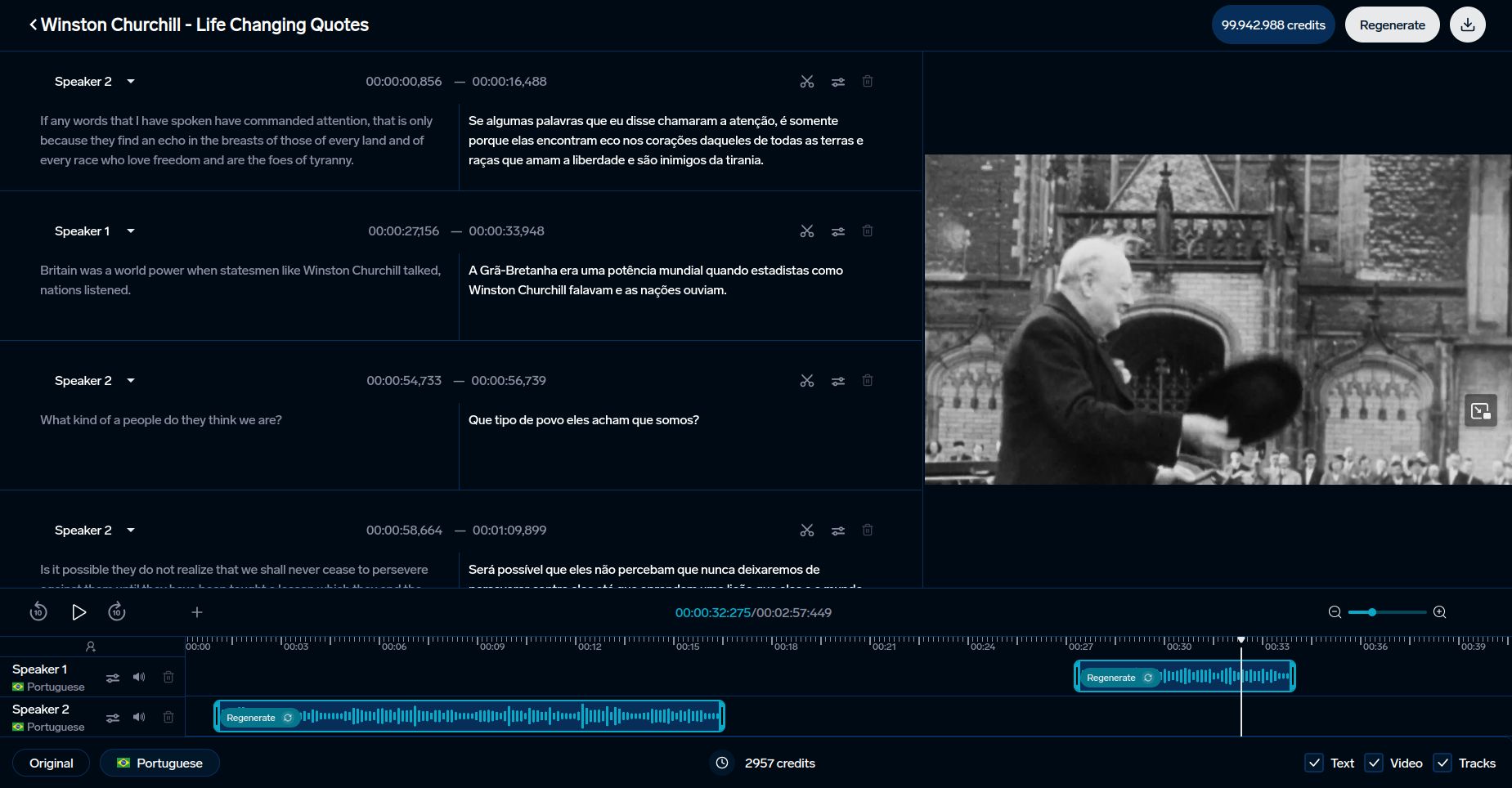Human vs. AI in Multilingual Dubbing
Human vs. AI dubbing: Which is better for your project?
Both human and AI dubbing have strengths and weaknesses. Human dubbing excels in emotional depth and cultural nuance but is slower and more expensive. AI dubbing is faster and cost-effective but lacks emotional and cultural accuracy. A hybrid approach combines AI's speed with human expertise for balanced results.
Key Takeaways:
- Human Dubbing: Rich emotion, cultural accuracy, higher cost, slower production.
- AI Dubbing: Fast, affordable, consistent, but limited emotional and cultural depth.
- Hybrid Model: AI does the groundwork; humans refine for emotion and cultural relevance.
| Feature | Human Dubbing | AI Dubbing | Hybrid Approach |
|---|---|---|---|
| Emotional Depth | High | Limited | Balanced |
| Cultural Accuracy | High | Basic | Improved |
| Cost | Expensive | Affordable | Balanced |
| Speed | Slow | Fast | Moderate |
| Scalability | Limited | High | High |
For tight budgets or large-scale projects, AI tools like DubSmart can streamline the process. For emotional and cultural accuracy, human input is essential. The future lies in hybrid solutions that merge efficiency with quality.
Differences Between Human and AI Dubbing
Human Dubbing: Strengths and Limitations
Human dubbing stands out for its ability to convey emotion and adapt to cultural nuances. Professional voice actors bring life to characters, ensuring performances resonate with audiences on a deeper level. This method also excels at capturing the subtleties of cultural contexts, making it ideal for content that requires authenticity. However, the process can be resource-intensive. It involves translators, voice actors, and sound engineers, which drives up costs. Additionally, producing high-quality human dubbing takes time, especially for projects needing multiple language versions.
AI Dubbing: Strengths and Limitations
AI dubbing tools, such as DubSmart, are designed for speed and scalability. They process content quickly, making them a go-to solution for large-scale projects. AI also ensures consistent voice quality across languages, all while being more budget-friendly. That said, AI struggles to replicate the emotional depth and cultural sensitivity that human actors bring to the table. Even with these limitations, AI dubbing's speed and cost advantages make it a practical choice for certain types of content.
Comparison Table: Human vs. AI Dubbing
| Feature | Human Dubbing | AI Dubbing |
|---|---|---|
| Emotional Depth | Rich, authentic emotional expression | Limited emotional range |
| Cultural Adaptation | Skilled adaptation to cultural nuances | Basic handling of cultural differences |
| Cost | Higher due to professional resources | More affordable with automated processes |
| Production Speed | Slower, requiring detailed coordination | Fast, often completed within hours or days |
| Scalability | Limited by available human resources | Easily scales across multiple languages |
| Quality Consistency | Varies depending on individual performances | Consistent across projects |
AI technology is gradually improving in its ability to handle cultural and emotional subtleties. When choosing between human and AI dubbing, the decision often depends on the project's needs. For instance, high-budget entertainment content typically benefits from the emotional depth of human dubbing, while corporate projects with broad language requirements might lean toward AI solutions. A combined approach, leveraging both methods, could offer the best of both worlds by addressing their respective limitations.
Combining Human and AI in Dubbing
Process of Hybrid Dubbing
Hybrid dubbing blends the speed of AI with the nuanced expertise of human professionals, creating a streamlined workflow. It starts with AI-powered tools generating the initial dubbing tracks using automated translation and voice synthesis. From there, human voice artists and cultural specialists step in to refine and perfect the output.
DubSmart takes care of the groundwork by using its advanced voice cloning and translation technology in 33 languages. This first step delivers accurate translations and basic voiceovers, which are then polished by human experts for emotional depth and cultural relevance.
| Stage | Workflow Details |
|---|---|
| Initial AI Processing | Automated translation and synthetic voice generation |
| Human Refinement | Cultural adjustments, emotional depth, and quality checks |
Advantages of Hybrid Approach
The hybrid model combines the efficiency of AI with the cultural and emotional insight of human experts, making it especially useful for large-scale projects where fully manual dubbing might not be feasible. This method ensures multilingual content stays relevant to diverse audiences while maintaining cost and time efficiency.
Some of the key benefits include:
- Fast initial processing through AI
- Human expertise for cultural and emotional accuracy
- Balanced quality and cost
- Scalability for multiple languages
As AI continues to learn from human feedback, the need for extensive manual adjustments decreases, allowing for consistent quality while saving time and resources. This makes the hybrid model a practical choice for projects with tight budgets or deadlines.
With platforms like DubSmart leading the charge, hybrid dubbing is becoming a go-to solution for creating high-quality, multilingual content efficiently.
sbb-itb-f4517a0
AI Dubbing Tools Available
AI dubbing tools have transformed how multilingual content is created, making the process faster and more scalable. These tools are particularly useful in hybrid workflows, automating early stages and simplifying complex tasks.
DubSmart: Features and Pricing

DubSmart provides a range of features aimed at simplifying content localization and improving efficiency.
Here’s a quick breakdown of what it offers:
| Feature | Description | Why It Matters |
|---|---|---|
| Voice Cloning | Creates personalized, multilingual audio | Ensures consistent brand voice across languages |
| Text and Speech Processing | Produces realistic speech and accurate transcripts | Speeds up content production |
| Subtitle Generation | Supports over 70 languages | Makes content more accessible to global audiences |
| AI Dubbing | Supports 33 languages | Speeds up content localization |
DubSmart also offers flexible pricing plans tailored to different needs. For testing, there’s a free tier with 2 minutes of dubbing time. Paid plans start at $19.9/month for 50 minutes and go up to $249.9/month for 1000 minutes of dubbing time.
While DubSmart stands out for its wide range of features, comparing it to other platforms shows how AI dubbing tools continue to evolve.
Comparing AI Dubbing Tools
When choosing an AI dubbing tool, factors like language variety, voice quality, and cultural awareness are key. Tools like Murf.ai highlight the progress in these areas.
| Category | Traditional AI Dubbing | Advanced Platforms (e.g., DubSmart) |
|---|---|---|
| Language Support | Limited options | 30+ languages with regional accents |
| Voice Quality | Basic, robotic tones | More natural and lifelike |
| Customization | Few adjustments available | Includes voice cloning and style tweaks |
| Processing Speed | Slower | Faster rendering |
| Cultural Awareness | Basic | Better understanding of context |
These advancements make it easier to balance automation with the need for culturally relevant and high-quality audio.
Conclusion
Deciding between human and AI dubbing comes down to your project's specific needs. AI can cut production time by up to 90%, while human dubbing brings a deeper emotional connection and cultural nuance to the table.
For creators working with tight deadlines or limited budgets, AI tools like DubSmart can handle large-scale localization quickly and effectively. Looking ahead, the future of multilingual dubbing may rely on hybrid approaches - combining AI's speed with the nuanced touch of human expertise. These models often use AI for the initial dubbing process, with humans stepping in to fine-tune emotional and cultural elements.
When making a choice, consider factors like:
- The project's scope
- Budget limitations
- Required emotional depth
- Audience expectations
- Sensitivity to cultural details
